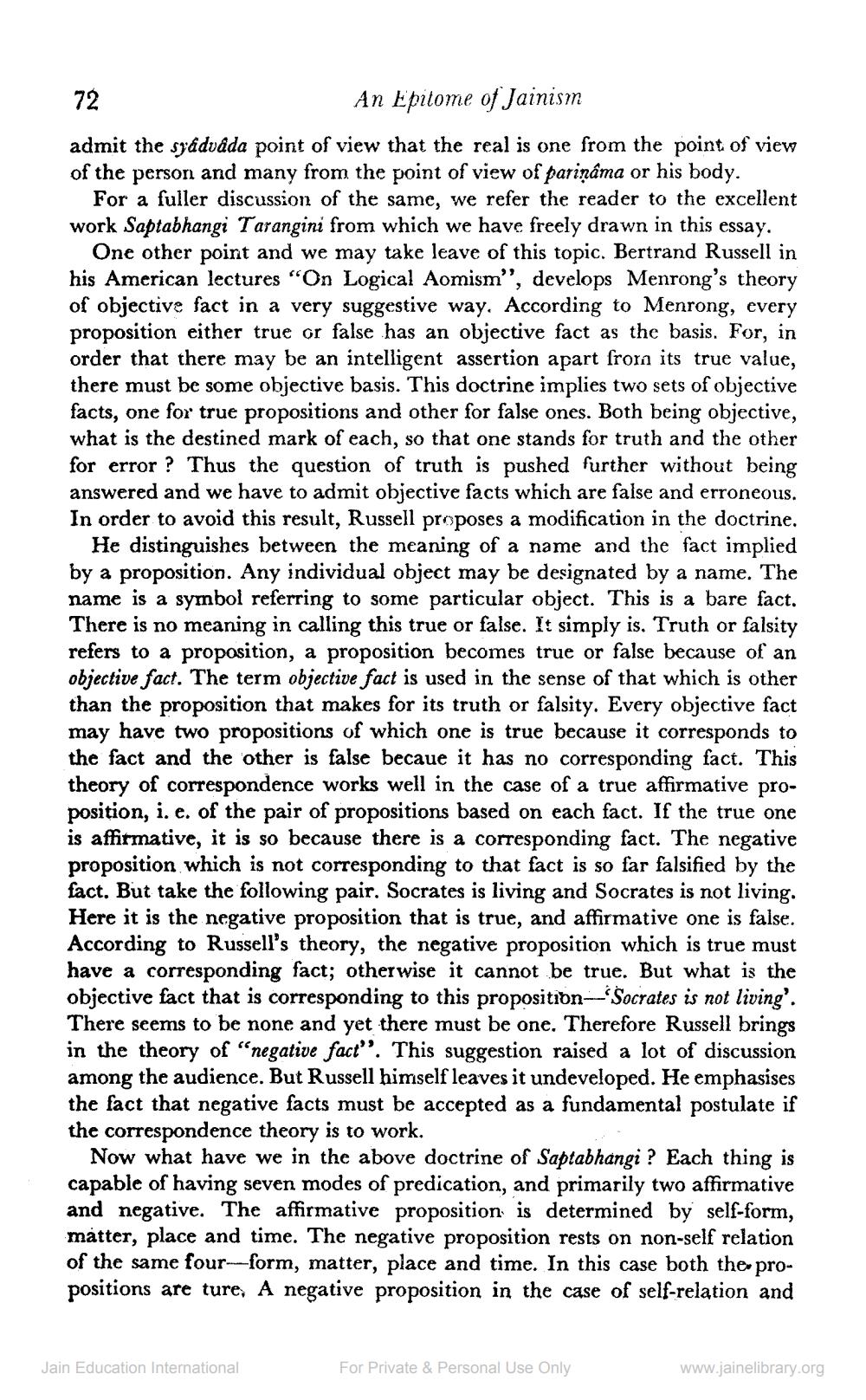________________
72
An Epitome of Jainism
admit the sjádváda point of view that the real is one from the point of view of the person and many from the point of view of pariņāma or his body.
For a fuller discussion of the same, we refer the reader to the excellent work Saptabhangi Tarangini from which we have freely drawn in this essay.
One other point and we may take leave of this topic. Bertrand Russell in his American lectures "On Logical Aomism", develops Menrong's theory of objective fact in a very suggestive way. According to Menrong, every proposition either true or false has an objective fact as the basis. For, in order that there may be an intelligent assertion apart frorn its true value, there must be some objective basis. This doctrine implies two sets of objective facts, one for true propositions and other for false ones. Both being objective, what is the destined mark of each, so that one stands for truth and the other for error ? Thus the question of truth is pushed further without being answered and we have to admit objective facts which are false and erroneous. In order to avoid this result, Russell proposes a modification in the doctrine.
He distinguishes between the meaning of a name and the fact implied by a proposition. Any individual object may be designated by a name. The name is a symbol referring to some particular object. This is a bare fact. There is no meaning in calling this true or false. It simply is. Truth or falsity refers to a proposition, a proposition becomes true or false because of an objective fact. The term objective fact is used in the sense of that which is other than the proposition that makes for its truth or falsity. Every objective fact may have two propositions of which one is true because it corresponds to the fact and the other is false becaue it has no corresponding fact. This theory of correspondence works well in the case of a true affirmative proposition, i. e. of the pair of propositions based on each fact. If the true one is affirmative, it is so because there is a corresponding fact. The negative proposition which is not corresponding to that fact is so far falsified by the fact. But take the following pair. Socrates is living and Socrates is not living. Here it is the negative proposition that is true, and affirmative one is false. According to Russell's theory, the negative proposition which is true must have a corresponding fact; otherwise it cannot be true. But what is the objective fact that is corresponding to this proposition--Socrates is not living'. There seems to be none and yet there must be one. Therefore Russell brings in the theory of "negative fact". This suggestion raised a lot of discussion among the audience. But Russell himself leaves it undeveloped. He emphasises the fact that negative facts must be accepted as a fundamental postulate if the correspondence theory is to work.
Now what have we in the above doctrine of Saptabhangi ? Each thing is capable of having seven modes of predication, and primarily two affirmative and negative. The affirmative proposition is determined by self-form, matter, place and time. The negative proposition rests on non-self relation of the same four-form, matter, place and time. In this case both the propositions are ture, A negative proposition in the case of self-relation and
Jain Education International
For Private & Personal Use Only
www.jainelibrary.org




